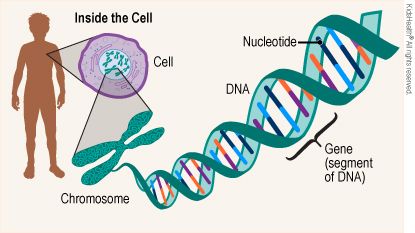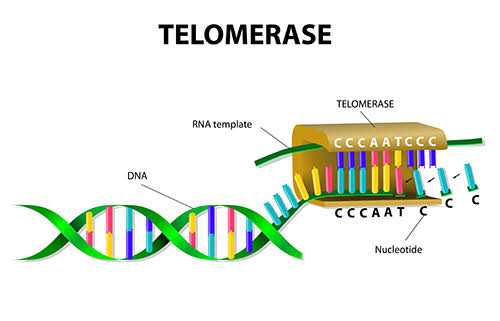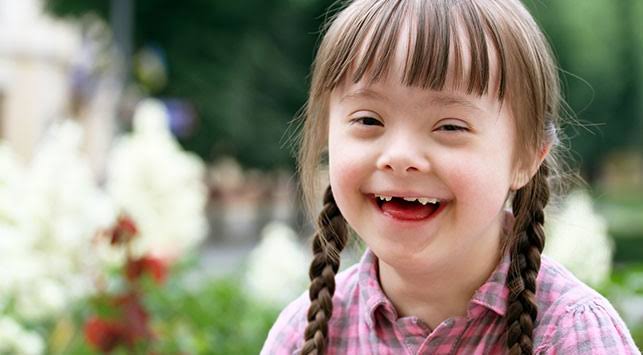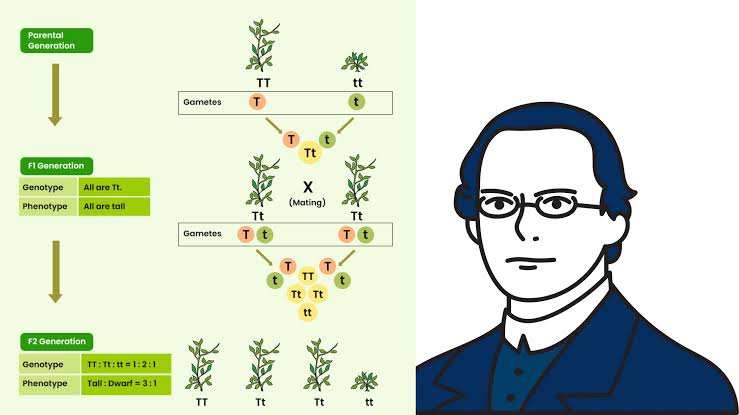
Inside the cell is the chromosome, which unravels and shows the DNA. DNA is 2 strands connected with nucleotides. A gene is segment of DNA.
Understanding Mutations
Mutations are changes in the DNA sequence of an organism’s genome. These alterations can occur due to various factors, including errors during DNA replication, exposure to radiation or chemicals, and viral infections. Mutations can affect a single nucleotide (point mutations) or larger segments of DNA (chromosomal mutations). They play a crucial role in evolution and can lead to variations within populations, which may be beneficial, neutral, or harmful.
Types of Mutations
Mutations can be broadly categorized into several types based on their nature and effects:
- Point Mutations
- Definition: Point mutations involve a change in a single nucleotide base pair in the DNA sequence.
- Subtypes:
- Silent Mutations: These do not change the amino acid sequence of the protein because they occur in non-coding regions or result in synonymous codons.
- Missense Mutations: These result in a different amino acid being incorporated into the protein, which may alter its function.
- Nonsense Mutations: These create a premature stop codon, leading to truncated proteins that are often nonfunctional.
- Insertions and Deletions (Indels)
- Definition: Insertions add one or more nucleotide bases into the DNA sequence, while deletions remove them.
- Effects: Both types can lead to frameshift mutations if they occur within coding regions. This alters the reading frame of the gene and typically results in completely different and often nonfunctional proteins.
- Duplication Mutations
- Definition: Duplications involve copying segments of DNA, resulting in multiple copies of a particular gene or region.
- Effects: This can lead to overexpression of certain genes and contribute to genetic diversity but may also cause diseases if regulatory mechanisms fail.
- Inversions
- Definition: Inversions occur when a segment of DNA is reversed end to end within the chromosome.
- Effects: This can disrupt gene function if it occurs within a gene or affect gene regulation if it alters promoter regions.
- Translocations
- Definition: Translocations involve the rearrangement of parts between non-homologous chromosomes.
- Effects: This can lead to gene fusion events that may produce novel proteins with altered functions and is often implicated in cancers.
- Chromosomal Mutations
- These include large-scale changes affecting whole chromosomes or large segments thereof:
- Aneuploidy: The presence of an abnormal number of chromosomes (e.g., trisomy 21).
- Polyploidy: The condition where an organism has extra sets of chromosomes (common in plants).
- These include large-scale changes affecting whole chromosomes or large segments thereof:
- Spontaneous vs. Induced Mutations
- Spontaneous mutations arise naturally during cellular processes like DNA replication.
- Induced mutations result from external factors such as chemical mutagens or radiation.
- Somatic vs. Germline Mutations
- Somatic mutations occur in non-reproductive cells and cannot be passed on to offspring.
- Germline mutations happen in reproductive cells (sperm and eggs) and can be inherited by future generations.
In summary, mutations are diverse alterations that can have significant implications for an organism’s phenotype and evolutionary trajectory. Their classification helps scientists understand their origins, mechanisms, and consequences on health and disease.
Comparison of DNA Repair Pathways: Mismatch Repair, Base Excision Repair, and Nucleotide Excision Repair
DNA repair is a critical cellular process that maintains genomic integrity by correcting various types of DNA damage. Cells utilize several distinct pathways to repair DNA, each specialized for different types of lesions. Here we will compare and contrast three major DNA repair mechanisms: mismatch repair (MMR), base excision repair (BER), and nucleotide excision repair (NER).
Mismatch Repair (MMR)
Mismatch repair is primarily responsible for correcting errors that occur during DNA replication, specifically the misincorporation of nucleotides. These errors can lead to base pair mismatches or insertion/deletion loops.
- Mechanism:
- The MMR pathway detects mismatched bases through specific proteins that recognize distortions in the DNA helix.
- Key proteins involved include MutS, which identifies the mismatch, and MutL, which helps coordinate the repair process.
- Once a mismatch is recognized, the strand containing the error is excised by exonucleases, and DNA polymerase synthesizes the correct sequence using the complementary strand as a template.
- Key Features:
- MMR is highly accurate and significantly reduces mutation rates.
- It operates primarily in prokaryotes and eukaryotes during S phase when DNA replication occurs.
- Clinical Relevance:
- Defects in MMR are associated with certain cancers, particularly Lynch syndrome (hereditary nonpolyposis colorectal cancer).
Base Excision Repair (BER)
Base excision repair is a mechanism that repairs small-scale damage to individual bases caused by oxidation, deamination, or alkylation.
- Mechanism:
- BER begins with the recognition of damaged bases by specific glycosylases that remove the altered base while leaving the sugar-phosphate backbone intact.
- This creates an abasic site (AP site), which is then processed by AP endonuclease to cleave the backbone.
- Subsequently, DNA polymerase fills in the gap with the correct nucleotide(s), followed by ligation to restore the integrity of the DNA strand.
- Key Features:
- BER can be categorized into short-patch and long-patch sub-pathways depending on whether one or multiple nucleotides are replaced.
- It plays a crucial role in maintaining genome stability against spontaneous lesions.
- Clinical Relevance:
- Impairments in BER can lead to neurodegenerative diseases and contribute to aging processes due to accumulation of mutations.
Nucleotide Excision Repair (NER)
Nucleotide excision repair addresses bulky DNA adducts such as those caused by UV radiation or chemical exposure.
- Mechanism:
- NER involves recognizing helix-distorting lesions through a complex of proteins including XPC and XPE.
- The damaged strand is unwound around the lesion site, allowing for dual incisions on either side of the damage.
- The excised oligonucleotide containing the lesion is removed, followed by synthesis of new DNA using undamaged strands as templates.
- Key Features:
- NER can be divided into global genome NER (GG-NER) which scans across all genomic regions and transcription-coupled NER (TC-NER) which focuses on actively transcribed genes.
- This pathway is essential for repairing UV-induced thymine dimers.
- Clinical Relevance:
- Deficiencies in NER are linked to xeroderma pigmentosum, characterized by extreme sensitivity to sunlight and increased skin cancer risk.
Comparison Summary
- Type of Damage Addressed:
- MMR focuses on replication errors; BER targets small base modifications; NER repairs bulky adducts from environmental damage.
- Mechanistic Differences:
- MMR relies on recognition of mismatches during replication; BER involves removal of single damaged bases; NER requires extensive unwinding and incision around larger lesions.
- Cellular Contexts:
- All three pathways operate within different contexts—MMR during replication; BER throughout cell cycles; NER responds primarily to environmental insults.
In summary, while all three pathways serve vital roles in maintaining genomic stability through distinct mechanisms tailored for specific types of damage, they collectively ensure cellular health by preventing mutations from accumulating over time.
Recombination: An Overview
Recombination is a biological process that involves the exchange of genetic material between different DNA molecules, leading to new combinations of alleles. This process is crucial for generating genetic diversity within populations and plays a significant role in evolution, adaptation, and the maintenance of genetic health.
Types of Recombination
There are two primary types of recombination:
- Interchromosomal Recombination: This occurs during meiosis when homologous chromosomes assort independently. It involves the random orientation of pairs of homologous chromosomes, resulting in the independent assortment of alleles located on different chromosomes.
- Intrachromosomal Recombination: This type occurs through crossing over during meiosis. It involves the physical exchange of segments between non-sister chromatids of homologous chromosomes.
Mechanism of Recombination
The recombination process can be broken down into several key steps:
- Meiosis and Chromosome Pairing: In eukaryotic organisms, recombination typically occurs during meiosis, specifically in prophase I. Here, homologous chromosomes pair up in a process called synapsis.
- Crossover Formation: During synapsis, sections of chromatids from homologous chromosomes can overlap and fuse temporarily. This leads to crossover events where segments of DNA are exchanged between chromatids.
- Strand Breakage and Repair: The crossover process involves breaking and rejoining DNA strands. Enzymes known as recombinases facilitate this strand transfer step. For example, RecA in bacteria and RAD51/DMC1 in eukaryotes are critical for repairing double-strand breaks (DSBs) during recombination.
- Gene Conversion: Sometimes during recombination, one allele may be converted to another allele due to copying mechanisms that make homologous sequences identical.
- Outcome: The result is gametes (sperm or egg cells) with new combinations of alleles that differ from those present in either parent organism. This genetic variation is essential for evolution and adaptation.
- Recombination Frequency: The likelihood that recombination will occur between two loci on a chromosome depends on their physical distance; genes that are farther apart have a higher chance of being separated by crossover events than those that are closer together.
- Genetic Mapping: Geneticists utilize recombination frequencies to create linkage maps which help determine the relative positions of genes on chromosomes based on how often they are inherited together.
In summary, recombination is a fundamental biological process that enhances genetic diversity through complex mechanisms involving chromosome pairing, crossover formation, and DNA repair processes during meiosis.







